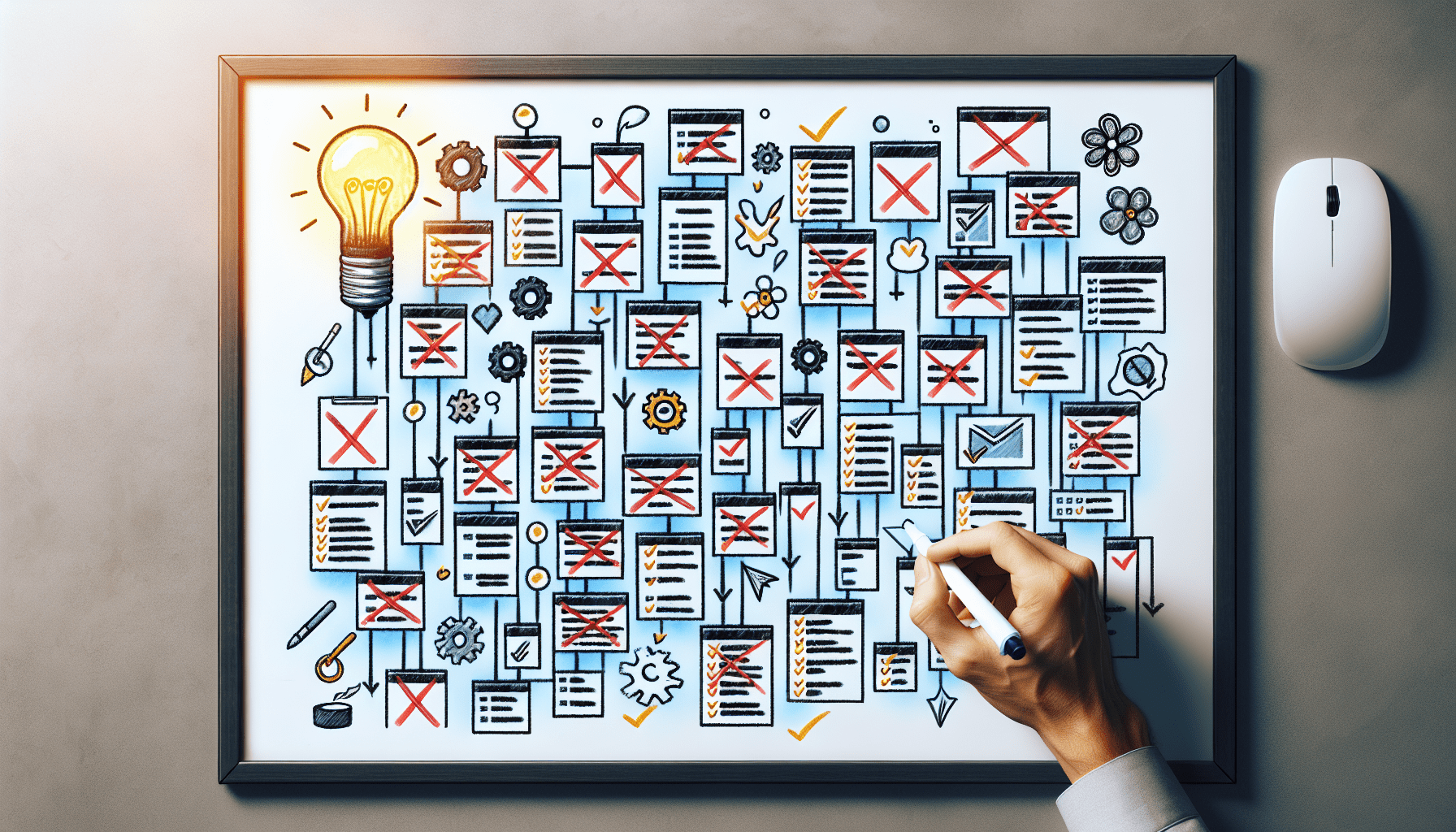
The Remote Worker’s Guide to Work-Life Balance

Did you know most remote workers struggle with managing time and distractions? The flexible nature of remote work brings its own set of challenges. It’s vital to set clear work hours, have a dedicated workspace, and communicate well with your team and bosses. These steps help reduce stress and stop burnout123.
Being productive in remote work relies on how you separate your work and personal life. Having a plan for your virtual office, including set working hours, good communication, and breaks, boosts your efficiency. Research shows that using productivity tips can make remote workers more efficient than those without3.
By finding a balance, remote workers can enjoy flexible work while avoiding stress, anxiety, and burnout. This guide aims to help you manage work and life together, no matter where you are in the world.
Key Takeaways
- Setting clear boundaries and dedicated work hours is critical for achieving work-life balance123.
- Creating a dedicated workspace enhances productivity and mental well-being12.
- Effective communication about your availability is essential for remote work success1.
- Regular breaks help prevent burnout and support mental health23.
- Dressing professionally, even when working remotely, can improve your mindset and productivity1.
The Importance of Setting a Clear Schedule
Having a clear schedule is key for a good Work-Home Integration. It boosts your productivity and helps you balance work and life better. A structured schedule can cut down stress, which is vital as it costs the U.S. $300 billion in medical bills and lost income yearly4.
Establishing Core Working Hours
It’s important to set clear core working hours for Telecommuting Best Practices. This means picking specific times when you’re fully on task and ready for work. Sticking to a schedule stops you from overworking, a big stress factor for many, as it’s a top reason for work stress4.
By focusing on one task at a time and using tools like the Eisenhower Box and Pomodoro Technique, you’ll see your productivity soar5.
Communicating Your Availability
Good communication is crucial for Flexible Work Arrangements to work well. Letting your team and family know your work hours helps manage their expectations and cuts down on interruptions. Tools like Trello or Slack make this easier, keeping everyone in the loop about when you’re available.
With over a quarter of Americans living alone, there’s a big risk of mental health issues from feeling isolated4. Checking in with your team regularly can help fight this by building a sense of community.
Adapting Flexibility While Maintaining Boundaries
Remote work gives you flexibility, but it’s important to keep clear boundaries to avoid burnout. Finding a balance between flexibility and structure is key to doing well without overdoing it. Time-blocking helps you set aside specific times for work and personal life, improving Work-Home Integration.
Using tools like Zapier to automate tasks can save time and reduce stress5. Toxic perfectionism can lead to mental health problems, so it’s crucial to avoid overcommitting and set achievable goals4.
Optimising Your Workspace for Productivity
Creating an optimal workspace is key for better Remote Work Productivity and Healthy Work Habits. It should be free from distractions and clutter to help you focus and work efficiently. Having a specific area for work helps keep your professional and personal life separate.
Choosing the Right Location
It’s important to pick the right spot for your home office. Stay away from places like the TV or busy areas in your home. Having a set workspace can make you feel calm and help balance work and life6. Good lighting in your workspace is also crucial, as it cuts down on headaches and eye strain, making you more focused and motivated6.
Eliminating Distractions
Distractions can really hurt your productivity when working from home. Using noise reduction methods can keep you alert and full of energy all day6. It’s also important to set clear rules for talking to family members to get uninterrupted work time7. This helps you keep a structured work schedule, which is important for staying professional at home.
Maintaining a Clean and Organised Desk
Keeping your desk clean and tidy is key to boosting Remote Work Productivity. Using ergonomic furniture, like adjustable chairs and sit/stand desks, can make you more productive and healthy6. Also, good air quality, room temperature, and sound levels in your workspace affect your productivity6. A tidy desk helps manage stress and supports self-care.
For more tips on setting boundaries, looking after yourself, and handling stress, check out these resilience strategies.
Research shows that companies that allow remote work see a 25% lower employee turnover rate than those that don’t. This shows how important a well-set workspace is for keeping employees happy8.
Making the Most of Breaks
Effective breaks are key for a good Work-Life Balance for Remote Workers. They keep you refreshed and focused. This leads to better productivity and a healthier work life.
Taking Regular, Scheduled Breaks
Regular breaks recharge your energy and keep you sharp9. Adding personal tasks to your workday makes breaks more meaningful10. It’s important to have these breaks often to keep up Healthy Work Habits.
Engaging in Physical Activity
Doing physical activities during breaks, like a short walk, is good for your health9. It wakes up your body and mind, making you more productive and happy.

Using Breaks for Mental Relaxation
Use breaks to relax and keep a Work-Life Balance for Remote Workers. These breaks are crucial to fight work burnout and support Healthy Work Habits. Activities like meditation, reading, or hobbies refresh you for work10.
Sticking to a Morning Routine
Starting your day with a good morning routine is key for staying productive while working from home. It gets your mind and body ready for the day, much like being in an office. It also helps you wind down at night, leading to better sleep11.
A morning routine can make you feel better and help you do more during the day11. Just using a planner or digital calendar for your tasks can make you more efficient. This ensures you keep up with your work11.
For those living the digital nomad life, sticking to a schedule keeps work and personal life in balance. Having clear start and end times for work stops you from wasting time or working too much. A morning routine gives you structure and makes things predictable12.
Doing things like going for a walk or exercising in the morning can make you feel more awake and happy. It gets you ready for a productive day. Taking short breaks outside can also help keep you balanced and productive12.
Using tools like digital calendars or apps helps you plan your tasks and stay on track. These tools make it easy to fit work into your morning routine. This keeps you focused and efficient all day11.
A morning routine is very important. It sets clear expectations with your team and bosses, helping you keep a good balance between work and life12. By sticking to these habits, you boost your productivity and live a fulfilling digital nomad life.
Work-Life Balance for Remote Workers
For remote workers, keeping a good work-life balance is key. Many face work-family conflicts, with 35% affected13. Using stress management strategies can boost your well-being and productivity. Luckily, 72% of teleworkers find that working from home reduces stress13.
Having a set routine and a dedicated workspace helps a lot. Flexible work schedules are good for well-being, with 81% of teleworkers noticing the positive effects13. Also, 68% are happier with their flexible schedules, showing how important these work setups are13.
Flexible work arrangements make people more productive and satisfied, with 64% saying they help with work-life balance13. But, it’s vital to set clear boundaries to avoid overworking. A 2021 ADP survey found remote workers do 9.4 unpaid overtime hours a week, which can lead to burnout14.
Working more than 55 hours a week can raise health risks, like a 35% higher stroke risk and a 17% higher risk of fatal heart disease14. Using good stress management and sticking to core working hours is key for a healthy balance. Taking regular breaks is also crucial for staying productive and refreshed14.
So, it’s important to understand the value of routines, a proper workspace, and managing your time well. Remote work offers many benefits, but setting boundaries is key to protecting your personal time and health.
Managing Remote Work Stress
Remote work can mix up your work and personal life, making you more stressed. To deal with this, figure out what stresses you and find ways to lessen it. Knowing how Remote Work Productivity and Stress Management are connected is crucial for a balanced life.
Identifying Stressors
First, spot the things that stress you out. Not having a good work-life balance can make you tired, stressed, and even lead to health problems like stroke and heart disease15. Mixing work and personal life can harm your mental health and cause burnout16. It’s hard for remote workers to separate work from home, so setting clear work times is key to staying disciplined17.
Implementing Stress Reduction Techniques
After finding out what stresses you, use good Telecommuting Best Practices to lessen stress. Planning your day helps avoid overworking and keeps track of tasks, making you more organised and less likely to burn out15. Keeping in touch with workmates online, through video calls and social media, stops you feeling lonely and lifts your mood16. Being flexible with work times, like working at different hours, suits various lifestyles and helps you stay healthy17.
By using these methods and focusing on Remote Work Productivity and Stress Management, you can keep a healthy balance between work and life.
Encouraging Healthy Work Habits
Working from home can be tough, especially when it’s hard to stop working. Over 40% of people struggle to switch off after work18. It’s key to keep work and home life separate.
Setting clear schedules and boundaries is important for a good work-life balance. Most remote workers feel they must always be on call, which can be stressful18. It helps to tell people when you’re free. Plus, 83% of workers worldwide think looking after their health is crucial, showing how vital support from employers is19.
Having hobbies outside work can boost creativity and personal growth. They’re key for a balanced life. Yet, 40% of remote workers feel left out, leading to loneliness18. We need ways to connect with our colleagues to stay happy and productive.
Offering wellness activities like yoga, meditation, and gym memberships can really help remote workers18. Good sleep, healthy eating, and avoiding too many snacks are also vital for staying well at home20. Sadly, many remote workers don’t plan to take breaks, which is worrying18. Taking breaks is key to avoiding burnout and staying productive.
In summary, creating a supportive work environment that values Healthy Work Habits is vital. Employers should focus on their remote team’s well-being to ensure a productive and balanced workplace.
Enhancing Remote Team Collaboration
To make remote teams work better, it’s key to use top-notch communication tools and set strong rules for online chats. Good ways to manage a virtual office help teams work together smoothly. This makes the team feel united and boosts work output.
Utilising Communication Tools
Tools for talking are a must in remote work, helping to bridge the distance gap. Tools like Slack, Discord, Zoom, and Microsoft Teams let teams chat in real time. Setting clear rules for talking with these tools builds a culture of openness and trust. This is key for working well together from afar21. Plus, working from home lets teams find talent from all over the world, making them more diverse and creative22.
Companies like Automattic and GitLab show how to use chats that don’t happen at the same time. This lets team members in different places work well together22. Using cloud tools like Trello, Asana, and Jira makes sharing tasks and tracking progress easier. This boosts how well remote offices work21.
Conducting Effective Virtual Meetings
Virtual meetings are key for remote teams to make decisions and stick together. But, to avoid issues like time zone problems and not understanding each other, it’s important to do meetings right. Having clear goals and agendas keeps meetings on track and focused. Adding fun parts and getting everyone involved makes meetings better for solving problems and keeping everyone interested23.
Studies show that regular online chats make teams work better together and build a sense of community among remote workers22. Also, 62% of remote workers talk daily to stay productive and keep up their spirits23.
In the end, using the right tools and ways for talking and meetings is key for remote teams to work well together. By creating a culture of openness, trust, and responsibility, companies can overcome remote work challenges. They can enjoy big cost savings and find talent from all over the world.
Benefits of Flexible Work Arrangements
Flexible work arrangements bring big benefits for both employees and companies. They let people work from home or pick their own hours. This can greatly improve several key areas.
Improved Productivity
Flexible work can make people much more productive. Studies show that 75% of those working from home face fewer distractions, which helps them work better24. Also, 86% of these workers feel more productive when they work alone24. This means they can help their companies do better, meeting both personal and company goals.
Companies that offer flexible working can see a boost in productivity for both big and small teams25. Plus, 89% of employees say flexible working motivates them more than extra pay25.
Better Employee Satisfaction
Flexible work also makes employees happier. Those working from home are more satisfied, scoring 8.10 out of 10 in job happiness compared to 7.42 for office workers24. They enjoy a better work-life balance thanks to flexible hours and less travel stress.
Remote workers save about $4,000 a year on travel costs24, and 40% see flexible hours as the best thing about working remotely24. Also, 87% of people want to work in a way that fits their life better, showing how important these arrangements are25. Flexible working helps keep good staff and attract new ones, like in the NHS25.

The effects of flexible work are clear. Companies that offer these options see less pay gaps, more job creation, and better competitiveness25. 99% of businesses see a flexible workforce as key25. Also, 92% of young people want flexible work, which could cut staff turnover by 87%25. These numbers show the big benefits and key role of flexible work in today’s jobs.
Conclusion
Achieving a good work-life balance as a remote worker means mixing structure, strategy, and mindfulness. By understanding the digital nomad lifestyle, you can make a plan that fits your work and personal life. It’s key to have clear schedules and a well-set workspace to stay productive and motivated.
A PricewaterhouseCoopers (PwC) survey found that remote workers face issues like low motivation, work-family conflict, and feeling lonely26. Yet, a SIOP conference showed that remote jobs can lead to more job satisfaction, better work-life balance, and less stress26. These findings stress the need for good remote work habits to overcome challenges.
A study found 70% of people think hybrid work improves work-life balance over office work27. To do well, it’s vital to keep learning from personal experiences and industry insights. Taking regular breaks, staying active, and keeping in touch with your team can boost your productivity and mental health. These steps help remote workers succeed in both work and life, leading to a healthier work culture.
The digital nomad lifestyle brings its own set of challenges and chances. Fully remote workers are 20% happier than those stuck in offices27. With the right support and using systems that combine people and technology, remote workers can make a positive work space26. Working towards a better work-life balance in remote jobs means always looking to improve and stay committed, helping you excel in all areas of life.






















